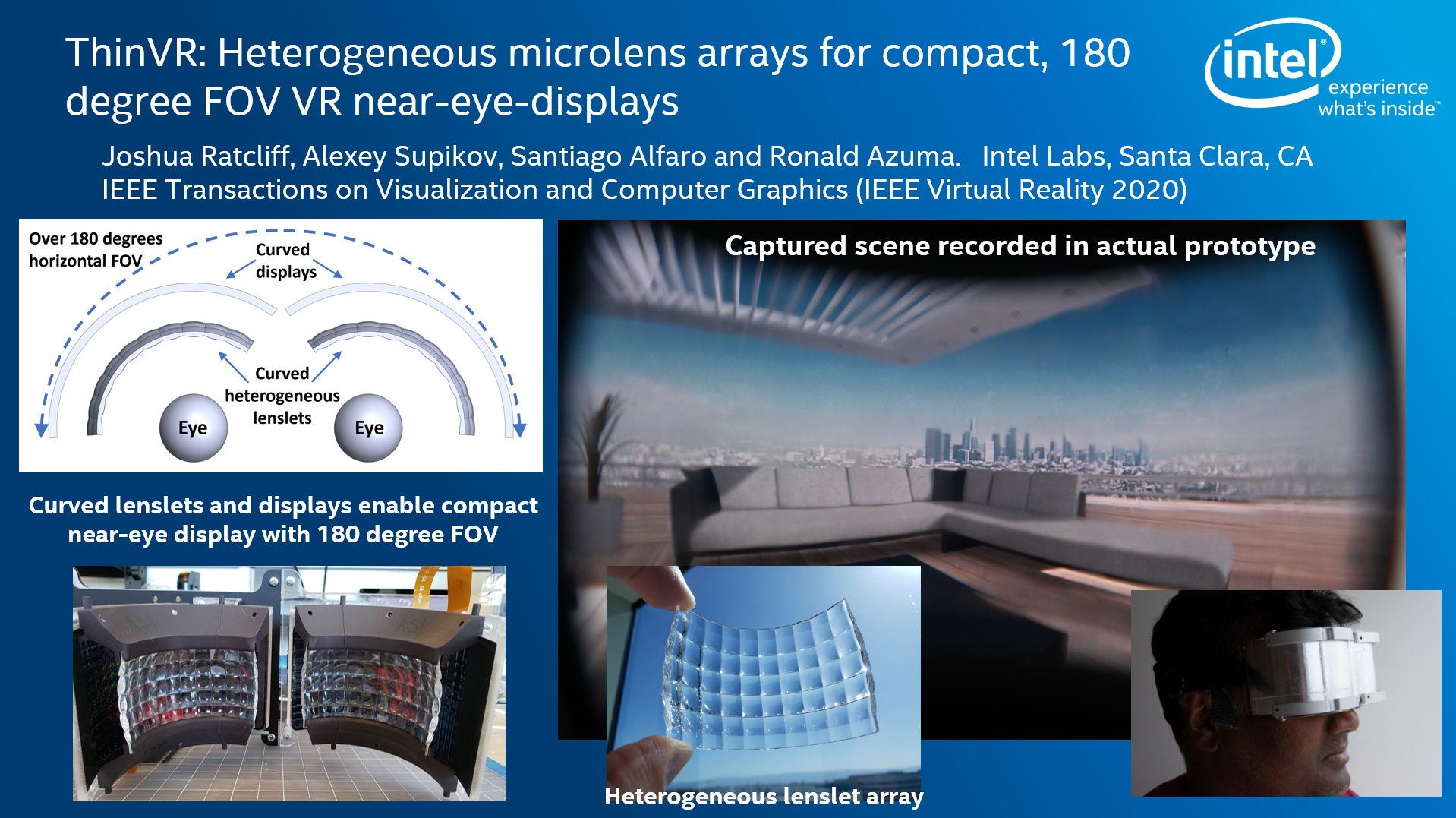
TL;DR (Executive Summary)
VR displays today are bulky and typically limit the field of view (FOV) to around 90 degrees. Increasing the FOV to 180 degrees increases the bulk even further. ThinVR is an approach to simultaneously achieve a 180 degree horizontal FOV and a compact form factor. We achieve this through a computational display approach that uses curved displays combined with custom-designed heterogeneous lenslet arrays. We proved that the core approach works by implementing this idea in prototypes using both static and dynamic displays.
The following 30 second video gives a quick overview of the approach and results:
Details
To learn more details about this project, please watch the following 15 minute presentation from IEEE VR 2020:
Then watch the 3 minute supplemental video:
Finally, please read the IEEE TVCG journal paper:
Ratcliff, Joshua, Alexey Supikov, Santiago Alfaro, and Ronald Azuma. ThinVR: Heterogeneous microlens arrays for compact, 180 degree FOV VR near-eye displays. IEEE Transactions on Visualization and Computer Graphics, vol. 26, #5 (May 2020), pp. 1981 - 1990. Presented at IEEE Virtual Reality 2020 (Atlanta, GA, 22 - 26 March 2020). PDF of the paper
We emphasized controlling for pupil swim distortion and providing an acceptable eyebox. All VR displays exhibit pupil swim distortion, where the image distorts as the eye position changes relative to the optics. However, this is a particularly serious challenge in lenslet based designs because such distortion could cause the image to break apart across the boundaries between lenslets. In our videos, we show that the image stays fused even as the eye position changes. Furthermore, we support an eyebox volume that is 19mm by 12mm at the widest point.
Our results are not perfect, and we describe limitations in the paper. There are still visible artifacts, particularly at the boundaries between lenslets, and these are caused by a variety of factors, including inaccurate geometries in the crevices between lenslets due to limits of the rapid prototyping manufacturing process. However, we have proven that the core approach works and we are confident that with sufficient investment, it is possible to overcome the remaining limitations.
To our knowledge, this is the first work to demonstrate and analyze curved heterogeneous microlens arrays for VR displays. We hope that these promising results stimulate new approaches to overcome the current problems with VR displays and accelerate the day when VR becomes ubiquitously accepted.
Joshua Ratcliff proposed the initial idea. The design, implementation and analysis were mostly done by three people: Joshua Ratcliff, Alexey Supikov and Santiago Alfaro. I served as the research manager of this project and provided technical direction, such as insisting we demonstrate 180 degrees horizontal FOV and suggesting designing the optics through an optimization approach. I also wrote 99% of the journal paper.
Supplemental materials
To see two full resolution images captured from the static prototype, along with an image and CAD file of the holders that mount both the display and lenslets, please download the supplemental ZIP file.